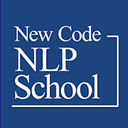西洋人の場合、子音を含む音節には左脳で反応しています。つまり、言語やそれに似た音を聞いたときは左脳で反応し、それら以外はすべて右脳で反応します。ここで注目したいのは、西洋人は、母音や持続母音には右脳で反応するということです。考えてみると、西洋の言語は子音を多く含む音節で構成されています。このため、西洋人の場合、母音や持続母音だけでは言語として認識されないことがわかります。
※赤字:母音
※青字:子音
・lemon[lemən]
・dog[dɔ'ːg | dɔ'g]
・why[hwai | wai]
・start[stɑ'ːrt]
・movement[muːvmənt]
・chrysanthemum[krisǽnθəməm]

日本人は自然界の音を左脳、人工的な音を右脳で反応している
日本人の場合、西洋楽器音、機械音、雑音には右脳で、それら以外にはすべて左脳で反応します。
A:かなり濁った雑音(右脳で処理している)
・飛行機のエンジンの音
・都会の雑踏の音
・建築現場の音
・電車の音や踏切警報機の音
B:まったく濁りのない無機質な音(右脳で処理している)
・時報を知らせる電子音
・ノイズをカットした電子楽器の音(シンセサイザーなど)
Aの「かなり濁った音」とBの「まったく濁りのない音」は極端ですが、自然界にはない「人工的な音」という意味では共通しています。まとめると、日本人は、人工的な音に右脳で反応し、自然界にある音に左脳で反応しているのです。
日本人が左脳で反応する「自然界にある音」については、また別の記事で具体的に考察したいと思います。

【参考文献】
Consideration
of auditory dominance patterns between Westerners and Japanese
Westerners respond to consonants in the left brain and vowels in the right brain.
In case of Westerners, they respond to syllables containing consonants in the left brain. In other words, when they hear language or similar sounds, they respond them in the left brain, and every other sound in the right brain. What we should like to note here, is that Westerners respond to vowels and sustained vowels in the right brain. When we think about Western languages, they are made up of syllables with lots of consonants. For this reason, in the case of Westerners, it is understood that vowels and durative vowels alone are not recognized as language.
※Red mark : vowel
※Blue mark : consonant
・lemon[lemən]
・dog[dɔ'ːg | dɔ'g]
・why[hwai | wai]
・start[stɑ'ːrt]
・movement[muːvmənt]
Japanese
people respond to natural sounds in the left brain, and artificial sounds in
the right brain.
In the case of Japanese people, they respond to Western musical instrument sounds, mechanical sounds, and noise in the right brain, and every other sound in the left brain.
A. Pretty turbid sounds(These sounds are treated in the right brain.)
・The sound of
airplane engine
・The noise of the
hustle and bustle of the city
・The noise of construction
site
・The sound of train
and crossing signal
B. Inorganic sounds with no turbidity (These sounds are treated in the right brain.)
・The electronic
sound to inform the time signal
・The sound of noise-cut
electronic instrument (synthesizers, etc.)
Although A’s “Pretty turbid sounds” and B’s “Sounds with no turbidity", seem completely unrelated, they are common in the sense that they are "artificial sounds" that do not exist in the natural world. In summary, the Japanese people respond to artificial sounds in the right brain, and natural sounds in the left brain.
About the “sounds in the natural world” that Japanese people respond to in left brain, I would like to consider specifically in another text.

[References]
Akikazu Nakamura, Harmonic Tone:Sound・Language・Note of Bodily Culture, Shunjusha, November 1, 2010.
Tadanobu Tsunoda, The Brain of Japanese with Japanese as their mother language: Reason・Sensitivity・Emotion, Science of Time and the Earth, Gensosha, April 15, 2016.
NLP共同創始者ジョン・グリンダー博士認定校
ニューコードNLPスクール

記事投稿日:2023/07/11



















































































